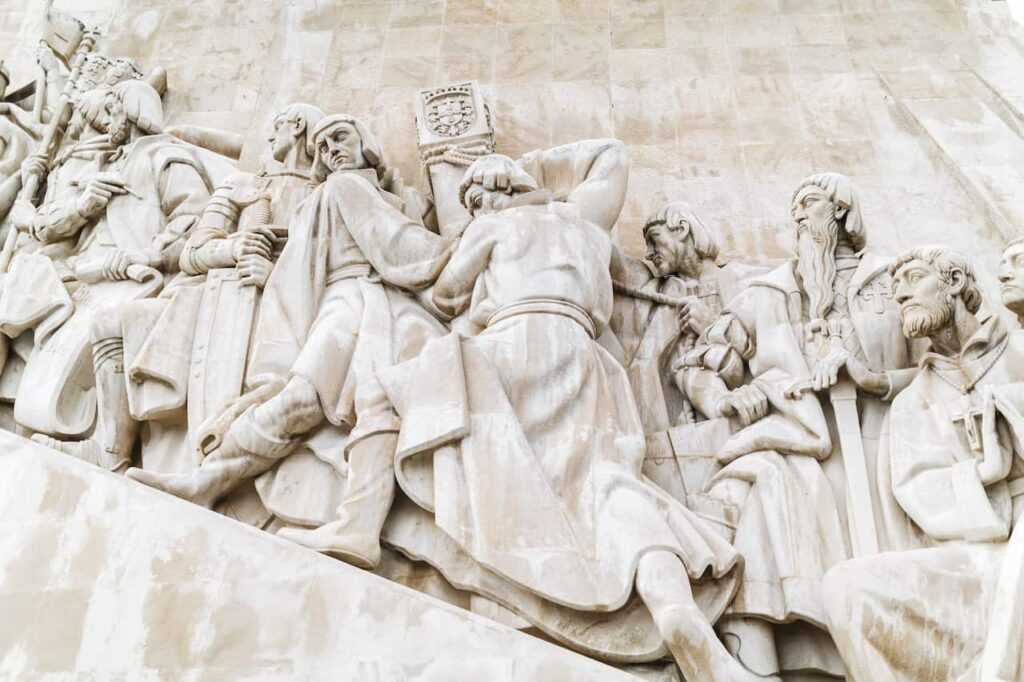Exploring Lisbon’s Monument to the Discoveries
Lisbon, the vibrant capital of Portugal, is a city rich in history and culture. One of its most iconic landmarks is the Monument to the Discoveries, a tribute to the Age of Exploration. This impressive structure stands proudly on the northern bank of the Tagus River, drawing visitors from around the world. Understanding the history behind this monument offers a glimpse into Portugal’s significant role in global exploration during the 15th and 16th centuries.
The Age of Exploration and Portugal’s Role
The Age of Exploration, also known as the Age of Discovery, was a period from the early 15th century to the early 17th century when European nations explored the world by sea. Portugal was at the forefront of this movement, with explorers like Vasco da Gama and Ferdinand Magellan leading expeditions that opened up new trade routes and expanded the known world. The Monument to the Discoveries celebrates these daring explorers and the era that transformed Portugal into a global maritime power.
Portugal’s strategic location on the Atlantic Ocean made it an ideal starting point for voyages to Africa, Asia, and the Americas. Under the guidance of Prince Henry the Navigator, Portuguese explorers made significant advances in navigation and shipbuilding, which enabled them to venture further than ever before. The discoveries made during this time not only brought wealth and knowledge to Portugal but also laid the groundwork for the modern interconnected world.
The Monument’s Design and Symbolism
The Monument to the Discoveries, or Padrão dos Descobrimentos in Portuguese, was originally conceived in 1940 as a temporary structure for the Portuguese World Exhibition. It was later rebuilt in 1960 to commemorate the 500th anniversary of the death of Prince Henry the Navigator. Designed by architect Cottinelli Telmo and sculptor Leopoldo de Almeida, the monument is shaped like a caravel, a type of ship used during the Age of Exploration.
Standing 52 meters tall, the monument features a group of statues representing key figures from the Age of Exploration. At the forefront is Prince Henry the Navigator, holding a model of a caravel. Behind him are other notable explorers, including Vasco da Gama, who found a sea route to India, and Ferdinand Magellan, who led the first expedition to circumnavigate the globe. The monument also includes figures from various fields, such as cartographers, scientists, and missionaries, highlighting the diverse contributions to Portugal’s maritime achievements.
The monument’s design is rich in symbolism. The caravel shape represents the ships that carried explorers across uncharted waters, while the figures symbolize the spirit of adventure and discovery. The location of the monument, facing the river, serves as a reminder of the journeys that began from Lisbon’s shores.
Visiting the Monument and Its Surroundings
The Monument to the Discoveries is located in the Belém district of Lisbon, an area known for its historical significance and beautiful architecture. Visitors can explore the monument and its surroundings to gain a deeper understanding of Portugal’s maritime history. The monument itself offers an observation deck at the top, accessible by elevator, providing panoramic views of the Tagus River and the city of Lisbon.
Nearby, visitors can explore other historical sites, such as the Jerónimos Monastery and the Belém Tower, both UNESCO World Heritage Sites. The Jerónimos Monastery, a masterpiece of Manueline architecture, was built to commemorate Vasco da Gama’s successful voyage to India. The Belém Tower, a fortress built in the early 16th century, served as a ceremonial gateway to Lisbon and a symbol of Portugal’s Age of Discovery.
The area around the monument is also home to the Maritime Museum, which offers exhibits on Portugal’s naval history, and the Cultural Center of Belém, which hosts various cultural events and exhibitions. Visitors can enjoy a leisurely stroll along the riverfront promenade or indulge in a traditional Portuguese pastry, the Pastel de Belém, at a nearby café.
